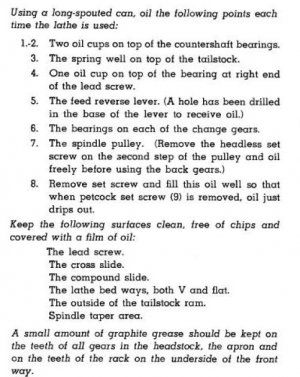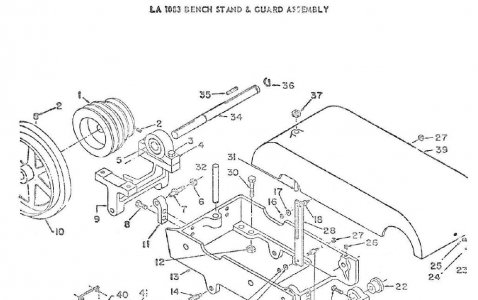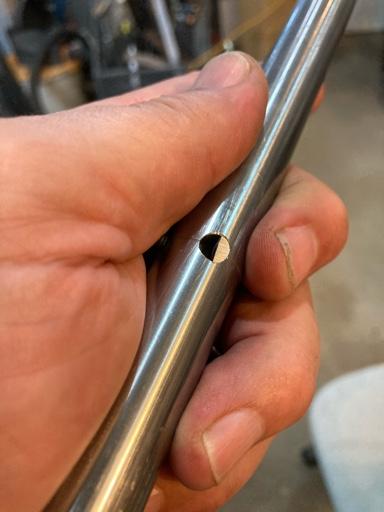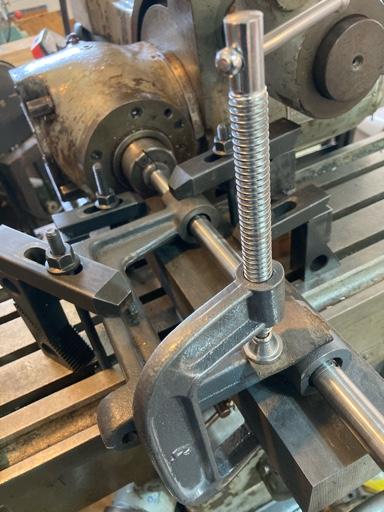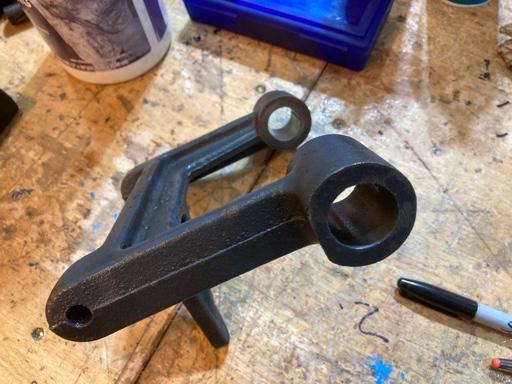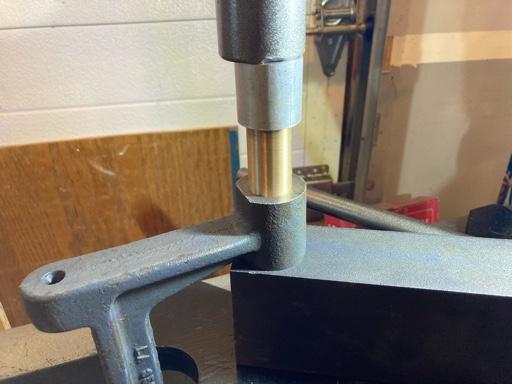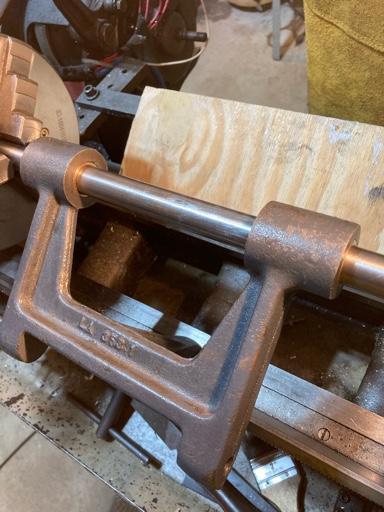- Joined
- Dec 25, 2011
- Messages
- 10,505
Tip to keep the drill bit from following the center of an egged hole. Don't use a drill bit, use an end mill. Preferably 4-flute and oreferably sindle ended. Start with the smallest size end mill that will cut, and progressively go to a larger end mill. You can probably expect some chatter. Probably need to use the lowest spindle RPM. When the hole is round again, switch back to drill bit. Don't make the steel bushing until you finish with the hole.
As far as clearance or interference between the new steel bushing and hole, look on the Loctite web site. It has been so long since I did one that I forget. But I think that it should still be a slight interference fit. The name of the product used to be Bearing and Bushing Seat I think. And the color was I think green.
On the fit for the Oilite bushings, again go with what they say. And do NOT use the Loctite on them. Because of the oil in the bushing it won't help any and it will plug up the pores and keep fresh oil from getting from the oil cup into the bushing. If the iron casting has no oil cups, I would add them and not expect to have to top them up but once or twice a year.
As far as clearance or interference between the new steel bushing and hole, look on the Loctite web site. It has been so long since I did one that I forget. But I think that it should still be a slight interference fit. The name of the product used to be Bearing and Bushing Seat I think. And the color was I think green.
On the fit for the Oilite bushings, again go with what they say. And do NOT use the Loctite on them. Because of the oil in the bushing it won't help any and it will plug up the pores and keep fresh oil from getting from the oil cup into the bushing. If the iron casting has no oil cups, I would add them and not expect to have to top them up but once or twice a year.


